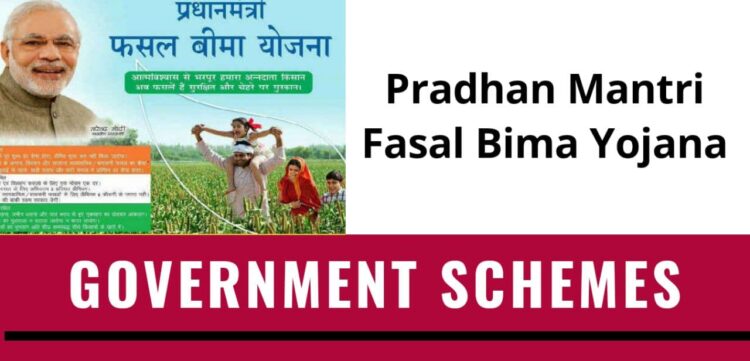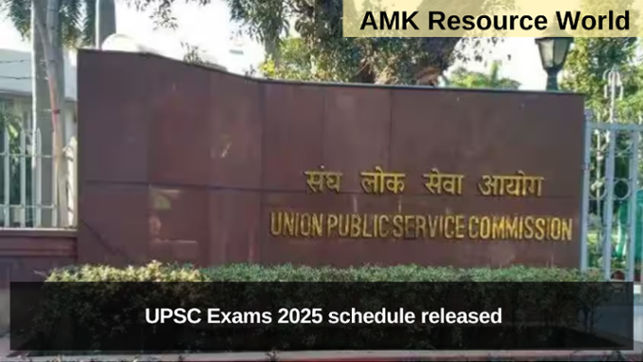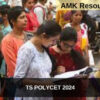On 18 February 2016 a scheme was launched by Prime Minister of India Narendra Modi which is an insurance service for farmers for their yields by the name Pradhan mantra Fasal Bima yojana.
By replacing earlier two schemes National Agricultural Insurance Scheme (NAIS) and Modified National Agricultural Insurance Scheme (MNAIS) by incorporating their best features and removing their inherent drawbacks (shortcomings),PMFBYwas formulated in line with One Nation–One Scheme theme.
PMFBY aims to provide a comprehensive insurance cover against failure of the crop thus helping in stabilising the income of the farmers. The Scheme covers all Food & Oil seeds crops and Annual Commercial/Horticultural Crops for which past yield data is available and for which requisite number of Crop Cutting Experiments (CCEs) are being conducted under General Crop Estimation Survey (GCES).
By empanelled general insurance companies the scheme is implemented .By the concerned State Government through bidding selection of Implementing Agency (IA) is done. The scheme is compulsory for loanee farmers availing Crop Loan /KCC account for notified crops and voluntary for other others. The scheme is being administered by Ministry of Agriculture.
Objectives
Pradhan Mantri Fasal Bima Yojana (PMFBY) scheme was launched for supporting sustainable production in agriculture sector by way of:
- In the event of failure of any of the notified crop as a result of natural calamities, pests & diseases, providing financial support to farmers.
- To ensure their continuance in farming by stabilizing the income of farmers.
- To adopt innovative and modern agricultural practices by encouraging farmers.
- Ensuring flow of credit to the agriculture sector which will contribute to food security, crop diversification and enhancing growth and competitiveness of agriculture sector besides protecting farmers from production risks.
Implementing Agency
Under the overall guidance & control of the Department of Agriculture, Cooperation & Farmers Welfare (DAC&FW), Ministry of Agriculture & Farmers Welfare (MoA&FW), Government of India (GOI) and the concerned State in co-ordination with various other agencies; viz Financial Institutions like Commercial Banks, Co-operative Banks, Regional Rural Banks and their regulatory bodies, Government Departments viz. Agriculture, Co-operation, Horticulture, Statistics, Revenue, Information/Science & Technology, Panchayati Raj etc the Scheme shall be implemented through a multi-agency framework by selected insurance companies.
Highlights of the scheme
There will be a uniform premium of only 2% to be paid by farmers for all Kharif crops and 1.5% for all Rabi crops. Only 5% of the premium to be paid by farmers in case of annual commercial and horticultural crops.To provide full insured amount to the farmers against crop loss on account of natural calamities, the premium rates to be paid by farmers are very low and balance premium will be paid by the Government.
Even if balance premium is 90%, it will be borne by the Government. Therefore there is no upper limit on Government subsidy.
Earlier, there was a provision of capping the premium rate which resulted in low claims being paid to farmers. This capping was done to limit Government outgo on the premium subsidy. This capping has now been removed and farmers will get claim against full sum insured without any reduction.
Technology implementation will be encouraged to a great extent. To capture and upload data of crop cutting to reduce the delays in claim payment to farmers’ Smart phones will be used. To reduce the number of crop cutting experiments Remote sensing will be used
PMFBY is a replacement scheme of NAIS / MNAIS, there will be exemption from Service Tax liability of all the services involved in the implementation of the scheme. It is estimated that the new scheme will ensure about 75-80 per cent of subsidy for the farmers in insurance premium.
Risks Covered Under the scheme
Yield Losses (standing crops, on notified area basis). Comprehensive risk insurance is provided to cover yield losses due to non-preventable risks, such as Natural Fire and Lightning, Storm, Hailstorm, Cyclone, Typhoon, Tempest, Hurricane, Tornado. Risks due to Flood, Inundation and Landslide, Drought, Dry spells, Pests/ Diseases also will be covered.
In cases where majority of the insured farmers of a notified area, having intent to sow/plant and incurred expenditure for the purpose, are prevented from sowing/planting the insured crop due to adverse weather conditions, shall be eligible for indemnity claims upto a maximum of 25 per cent of the sum-insured.
Coverage will be available up to a maximum period of 14 days from harvesting for those crops which are kept in “cut & spread” condition to dry in the field in post-harvest losses.
For certain localized problems, Loss / damage resulting from occurrence of identified localized risks like hailstorm, landslide, and Inundation affecting isolated farms in the notified area would also be covered.
Unit of Insurance
The Scheme shall be implemented on an ‘Area Approach basis’ i.e., Defined Areas for each notified crop for widespread calamities with the assumption that all the insured farmers, in a Unit of Insurance, to be defined as “Notified Area‟ for a crop, face similar risk exposures, incur to a large extent, identical cost of production per hectare, earn comparable farm income per hectare, and experience similar extent of crop loss due to the operation of an insured peril, in the notified area.
Defined Area (i.e., unit area of insurance) is Village/Village Panchayat level by whatsoever name these areas may be called for major crops and for other crops it may be a unit of size above the level of Village/Village Panchayat. In due course of time, the Unit of Insurance can be a Geo-Fenced/Geo-mapped region having homogenous Risk Profile for the notified crop.
The Unit of Insurance for loss assessment shall be the affected insured field of the individual farmer for Risks of Localised calamities and Post-Harvest losses on account of defined peril.










































